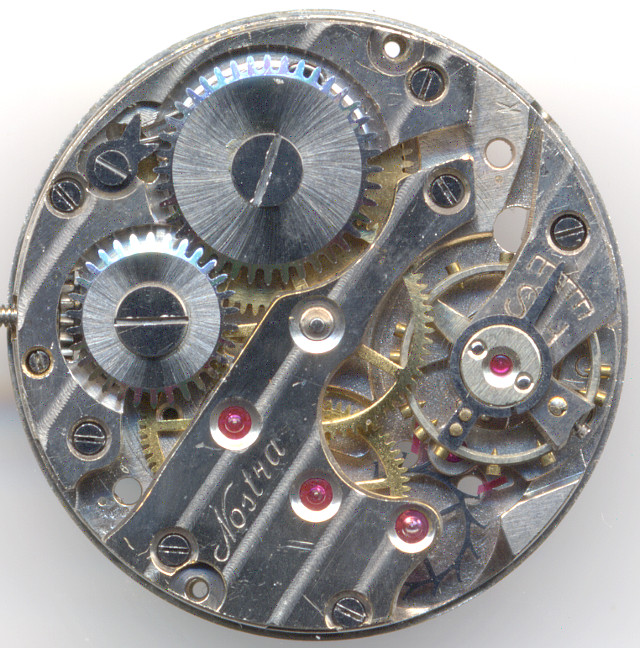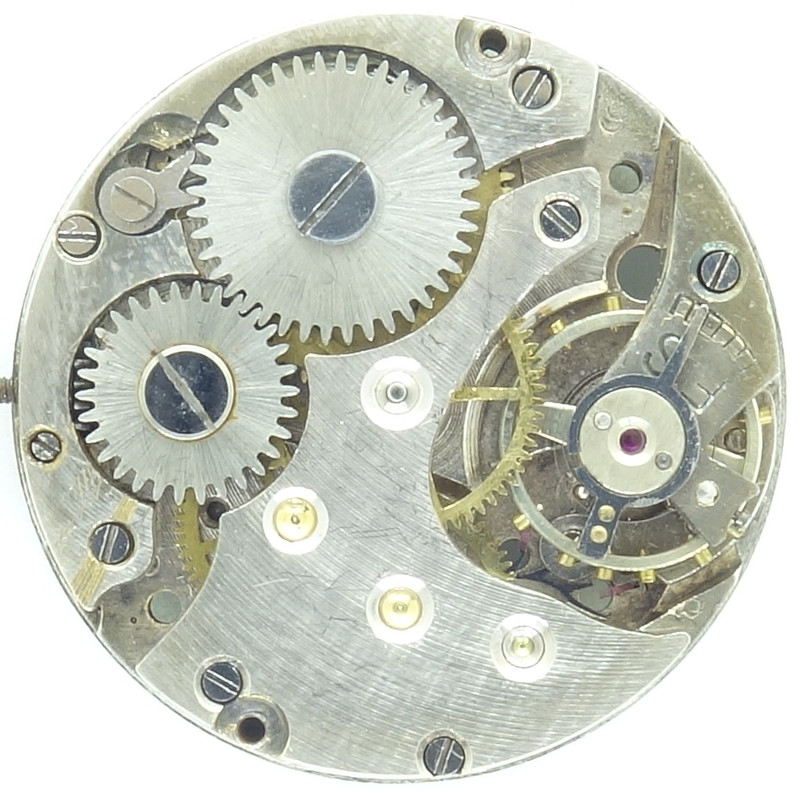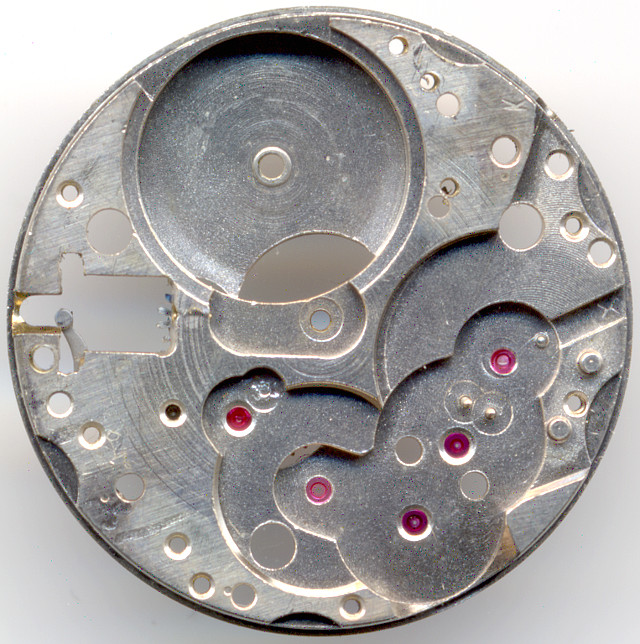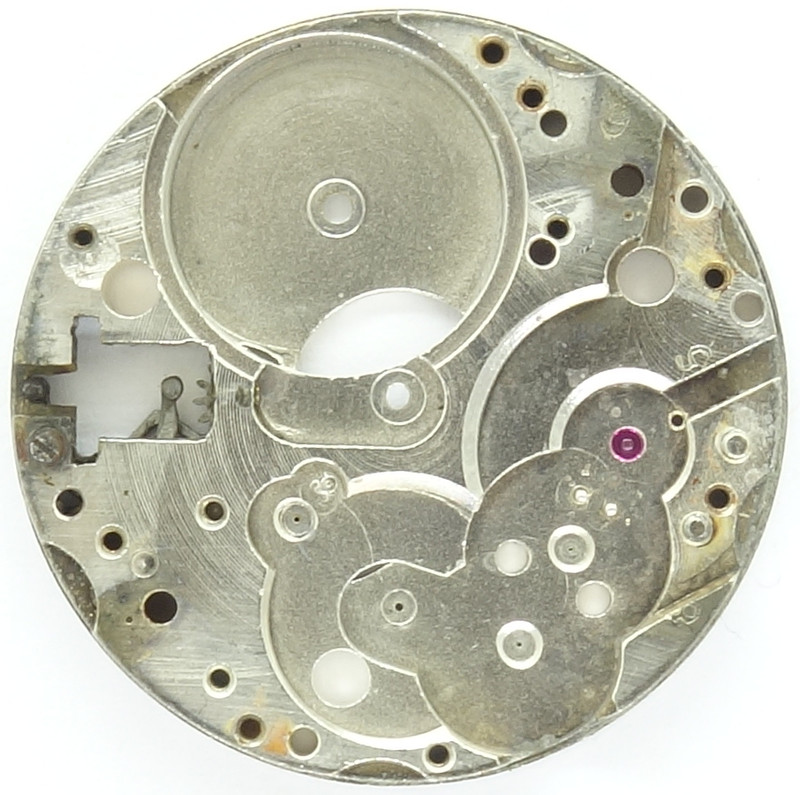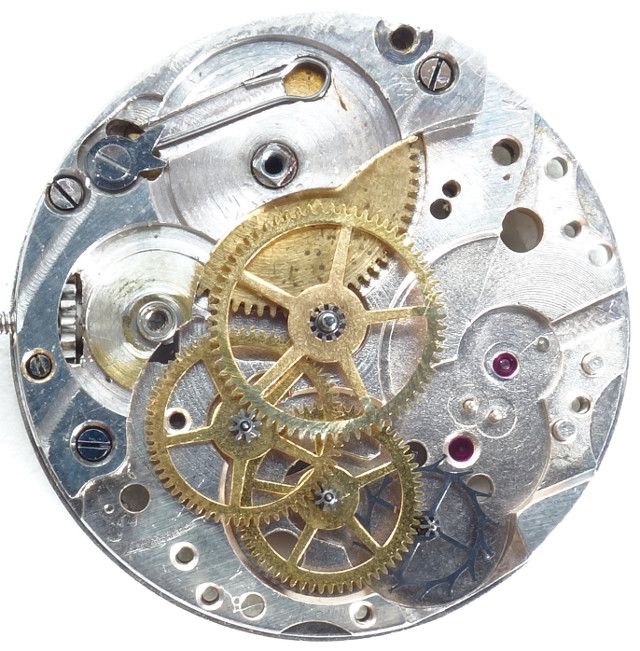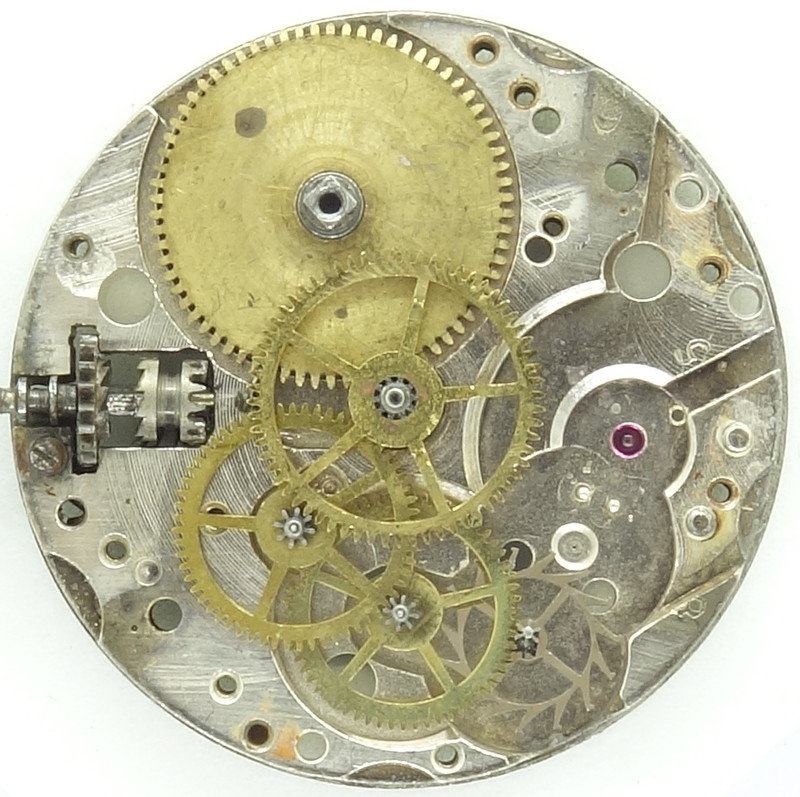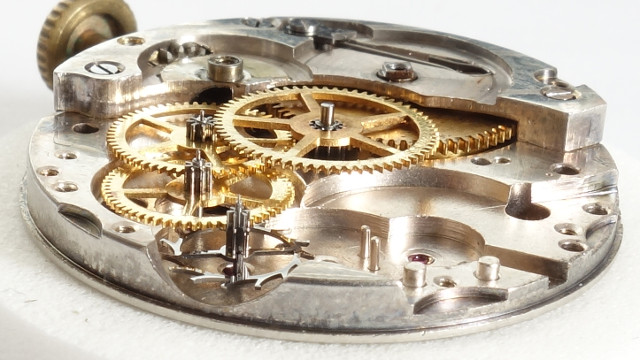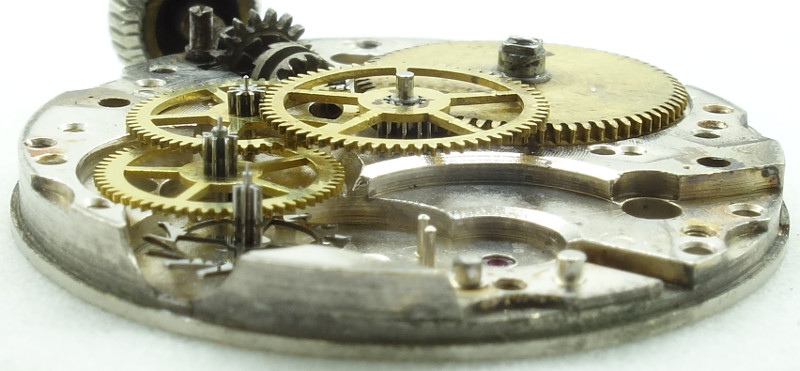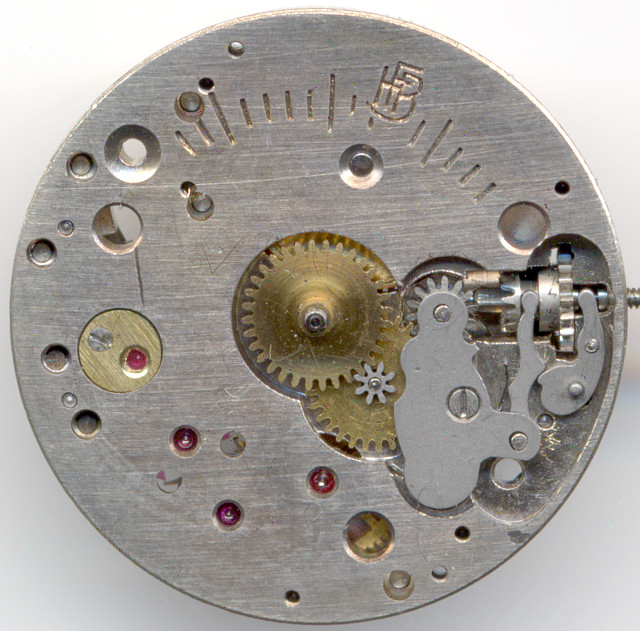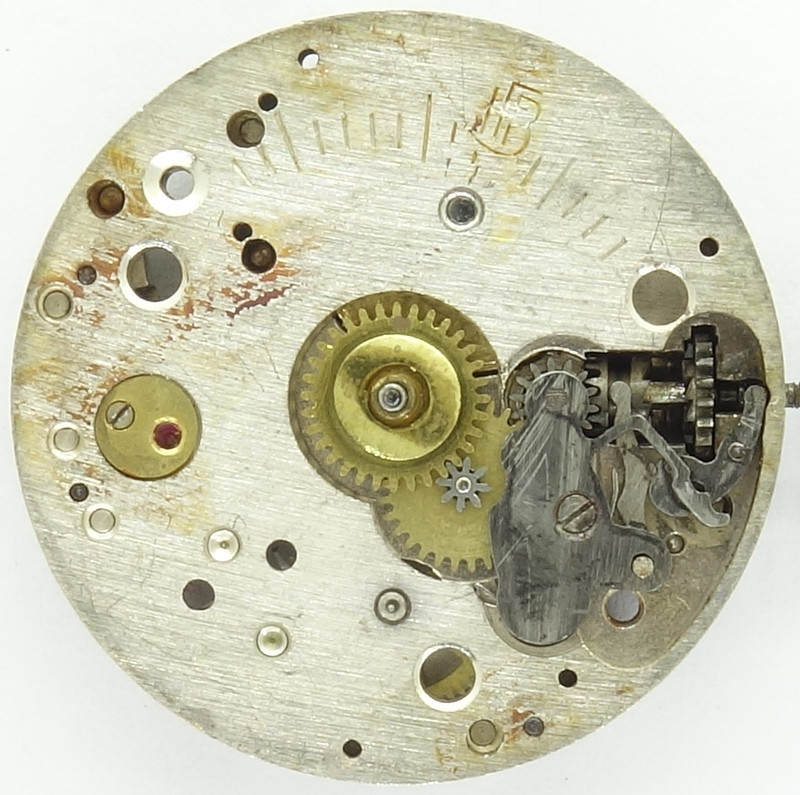Description
From the 1940ies, maybe even from the 1930ies, dates this visually appealing 10 1/2 ligne manual wind movement from the German manufacturer Hermann Friedrich Bauer from the surroundings of Pforzheim.
The new variant described here differs mainly in the shape of the gear bridge, which is simpler shaped than that of the old version.
It seems like Bauer experimented with different shapes of the gear bridge, because there’s also at least one other version known:
In this case, the movement can only be identified by the dial side setting lever spring as a Bauer 10 1/2 new.
The base place shows, that it’s possible to have a decentral seconds indication at 6 o’clock. In the center, there’s the directly driven minute wheel, which is not ruby-beared, just as the mainspring barrel. All other bearings are equipped with synthetic rubies, together with the escapement rubies a total of 15 - the common value in those times.
On the 7-jewels version, only the balance is ruby-beared.
The gear train is the standard of those days with rather large wheels and easy to service.
Of course, the seven jewel version is constructed in the same way.
The gear train of the Bauer 10 1/2 is standard and consists of a directly driven center minute wheel, the third wheel, the seconds wheel and the escapement wheel. The non shock-protected screw balance regulates that classical swiss pallet lever movement.
The effective length of the hairspring is adjusted by a long regulator arm, which makes it easier to adjust the excat beating rate of 18000 A/h.
On the dial side, you see the yoke windig system with its large clutch wheel. On top there’s a partially engraved minute scale, which allowed the adjustment of this movement without having a dial mounted. On older movements, this was pretty common.
Although it is not very clear to see, the angled shape of the setting lever spring is the main identification factor of the “new” version.
In the lab
Timegrapher result
The mean variation of the rates is on a level you can expect from a 70 to 80 year old movement of better quality, which did not get a service for probably a long time and which was heavily used. The rather large beat error is not uncommon to older movements, since its adjustment was difficult and time consuming, but since the amplitude of the balance is good, it’s not that critical.| horizontal positions | |||
|---|---|---|---|
| dial up | +1 s/d | 268° | 3.5ms |
| dial down | -24 s/d | 323° | 3.6ms |
| vertical positions | |||
| crown right (12 up) | 0 s/d | 241° | 04.1ms |
| crown up (3 up) | -168 s/d | 226° | 03.7ms |
| crown left (6 up) | -70 s/d | 215° | 3.5ms |
| crown down (9 up) | +30 s/d | 217° | 4.1ms |
Technical data
| Manufacturer: | Bauer H.F. |
| Caliber: | 10 1/2 neu |
| Size: | 10 1/2''' (measured: 23,2mm) |
| A/h: | 18000 |
| Number of jewels: | 7/15 |
| Escapement: | Pallet lever |
| Balance types: |
Nickel screw balance |
| Shock protection(s): |
none |
| Balance bearing / direction hairspring: | Clockwise |
| Moveable stud: | no |
| Adjust mechanism: | Long regulator arm |
| Construction: |
|
| Construction type: | solid construction |
| Winding mechanism: | yoke winding system |
| Setting lever spring: | 2 hole(s) |
| Features: |
|
| References: |
Flume: 1947 27 |
| Inventory number: | 17026,19029 |
